If you have bought a domain name and are wondering what to do next, congratulations on taking your first step! If you searched on Google for “I bought a domain name now what?”, don’t worry, I can help you get started.
Let me guide you on what to do next with your domain name and how to build your first website. I will provide you with seven useful tips that will make it easier for you to utilize your domain name effectively.
If you’re starting your first blog and feeling overwhelmed, don’t panic. Starting a blog may seem challenging at first, but trust me, it gets easier once you dive in.
Before we explore the exciting possibilities with your domain name, let’s first understand what exactly a domain name is.
A domain name is a unique address for your website that allows users to access it on the internet. It is used to find websites by translating the domain name into an IP address.
To explain further, computers use IP addresses, which are long strings of numbers that humans find difficult to remember. In order to make it easier, domain names were created to translate into IP addresses. A domain name can consist of a combination of letters, numbers, and some symbols.
By reading this article, you will:
- Discover what to do after purchasing a domain name.
- Learn various ways to get started with your domain name.
- Receive guidance on starting a blog after purchasing a domain.
- Gain insights on how to generate a monthly income of 4-5 digits ($$$$$) through your blog.
…and much more.
So, make sure to read this article until the end.
I Bought a Domain Name, Now What?
1. Getting a Hosting Plan for Your Domain Name
So, after purchasing your first domain name, how do you plan to use it? If you’re looking to launch a website and earn money using your domain name, then I strongly suggest getting a web hosting plan.
If you’re new to the blogging industry and unsure of which hosting provider is perfect for creating and hosting your blog or website, let me introduce you to the ideal hosting option.
Since I’ve been blogging since 2016, I have tried numerous hosting platforms and can recommend hundreds of web hosting providers, as well as a few free hosting providers. However, they are not suitable for you and will make your website very slow.
Instead of bombarding you with numerous hosting recommendations, I would only suggest trying SiteGround hosting.
For the fastest website speed and round-the-clock customer support, SiteGround is unbeatable as a web hosting platform.
SiteGround is an excellent web hosting option. It offers great speed, uptime, support, features, and pricing. I use it for some of my micro niche blogs and have experienced server response times of less than 200ms, as well as perfect GTMetrix and Pingdom reports.
Many bloggers, including myself, recommend SiteGround for faster website speed and better service. WordPress also officially endorses SiteGround hosting, as shown in the image below.

Here are a few notable features of SiteGround hosting.
- Free SSL Certificate from Let’s Encrypt
- Flexible Subscriptions
- Automatic Database Backup at No Charge
- Free Website Migration
- User-Friendly Interface
- Fast Loading Speed with Super Cache
- Outstanding Customer Support
Still not convinced why to use SiteGround hosting?
Here I’m sharing a few more reasons why SiteGround is the perfect hosting for you;
1. Yes, I’m Using SiteGround
One reason I recommend SiteGround hosting is because I personally use them for multiple projects. I consistently experience a server response time of less than 200ms and receive excellent reports from GTMetrix and Pingdom.
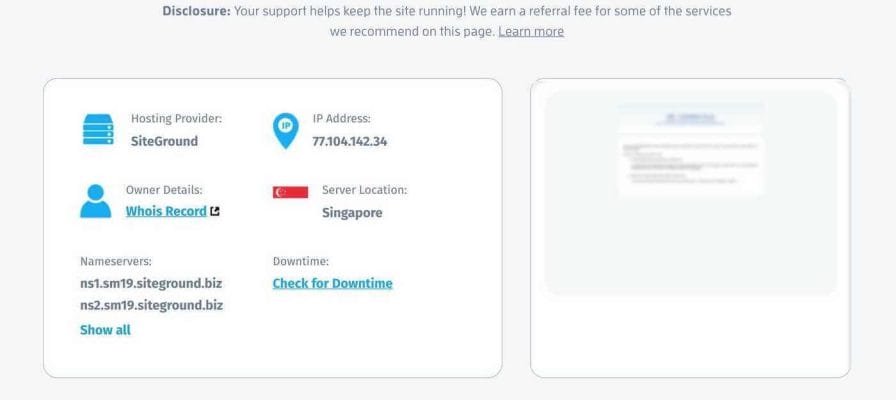
2. #1 Rated Host In Various Facebook Polls
Another reason to choose SiteGround is its recommendation by the majority of professional bloggers. Images below demonstrate SiteGround’s consistent ranking as #1 in numerous Facebook Group polls.
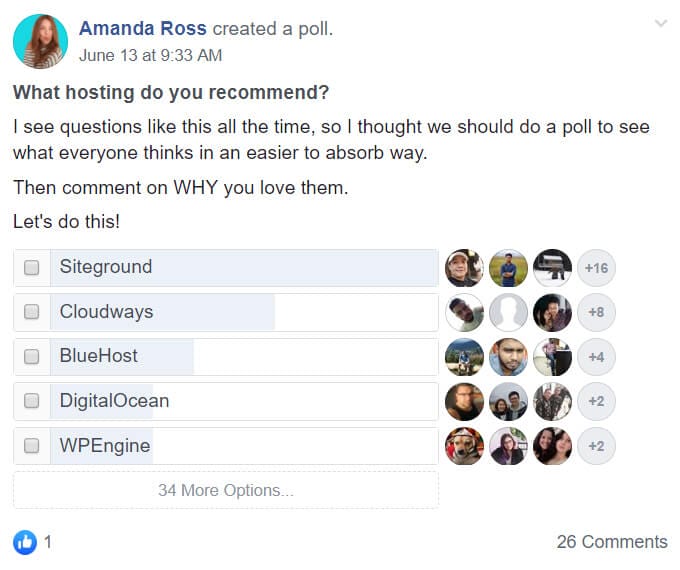
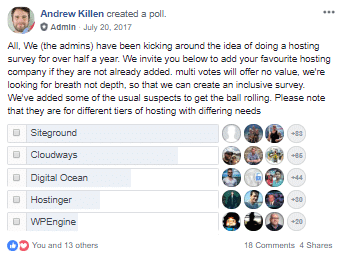
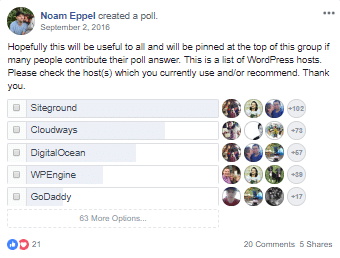
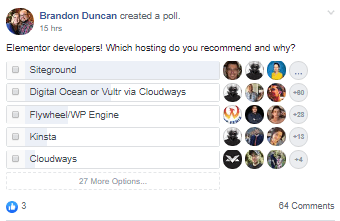
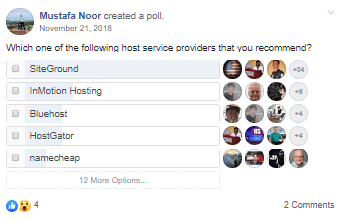
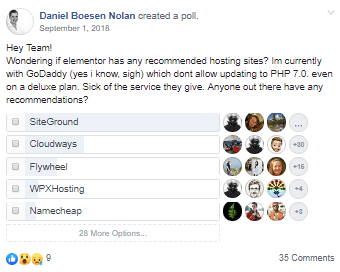
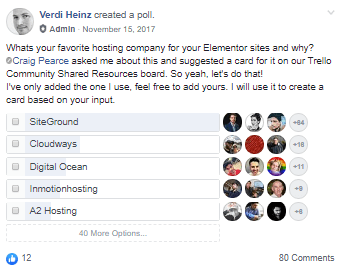
3. Endorsed By Yoast and WordPress
Not only do bloggers recommend it, but even Yoast uses SiteGround hosting on their website. Yoast is a powerful SEO plugin for WordPress that assists with SEO optimizations.

..and last, but not least, It is officially recommended by WordPress.org

2. Installing a WordPress CMS
Once you have purchased a domain name and hosting, you need to connect it to your domain name. By connecting your domain name to SiteGround, you will be able to install and use the WordPress CMS on your website.
To connect your domain name with hosting, you need to follow the same steps exactly.
But on the other side, if you’ve purchased your domain name and hosting from two different providers, then you’ve to change the nameserver of your domain name to hosting server in order to connect with each other.
So let’s see how to point your domain name to the hosting provider easily using NameServer;
If you have purchased your host and domain name from the siteground, then you can skip this part.
First, log in to your domain name registrar, where you registered your domain name. Many people purchase their first domain name from GoDaddy. In this guide, we will show you how to update your domain nameserver if you are using GoDaddy as your primary domain registrar.
To start, log in to your domain registrar. Alternatively, you can click here to go directly to the GoDaddy login page.

Once you logged-in to the GoDaddy account, click on the “DNS” option next to your domain name.

Once you have reached the DNS page, click on the “change” button next to the “NameServer” option. A pop-up will appear; enter your SiteGround nameserver here to propagate your domain name to SiteGround hosting. This process usually takes 15 minutes to 4 hours to reflect globally.
Now that your domain name is propagated to SiteGround, you can log in to your SiteGround cPanel and go to “WordPress Tool Options.”
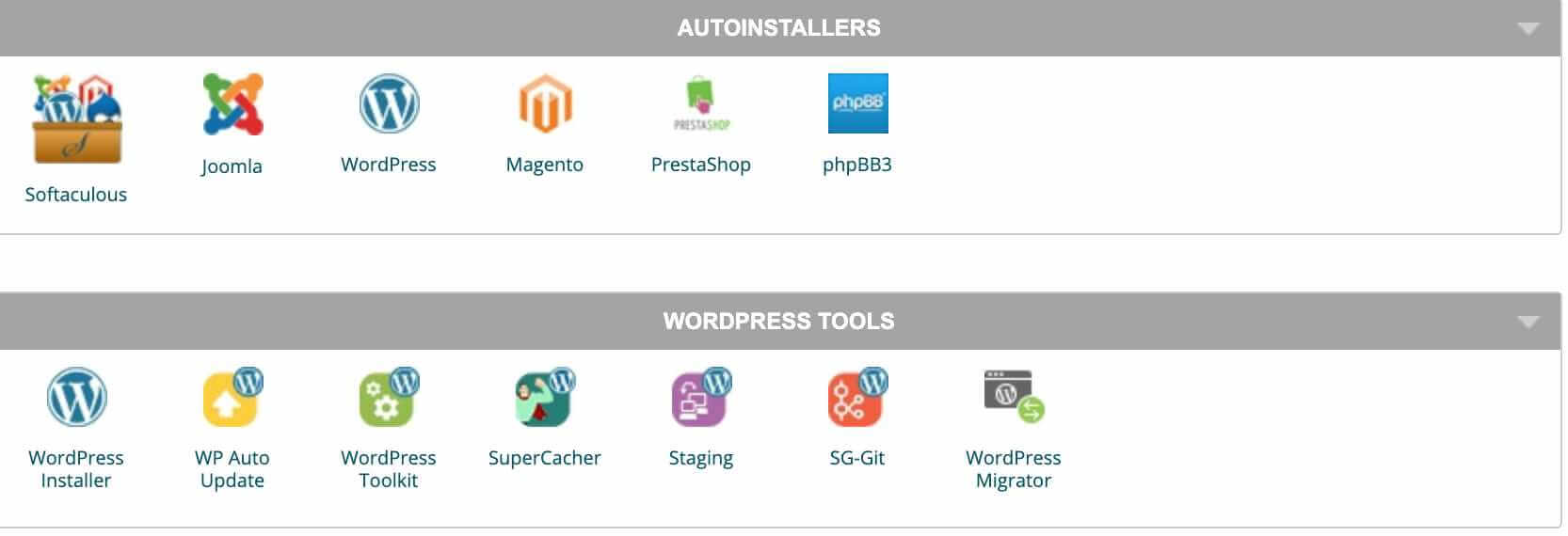
After that, click on “WordPress Installer” and then fill in the required details to install WordPress on your domain name.
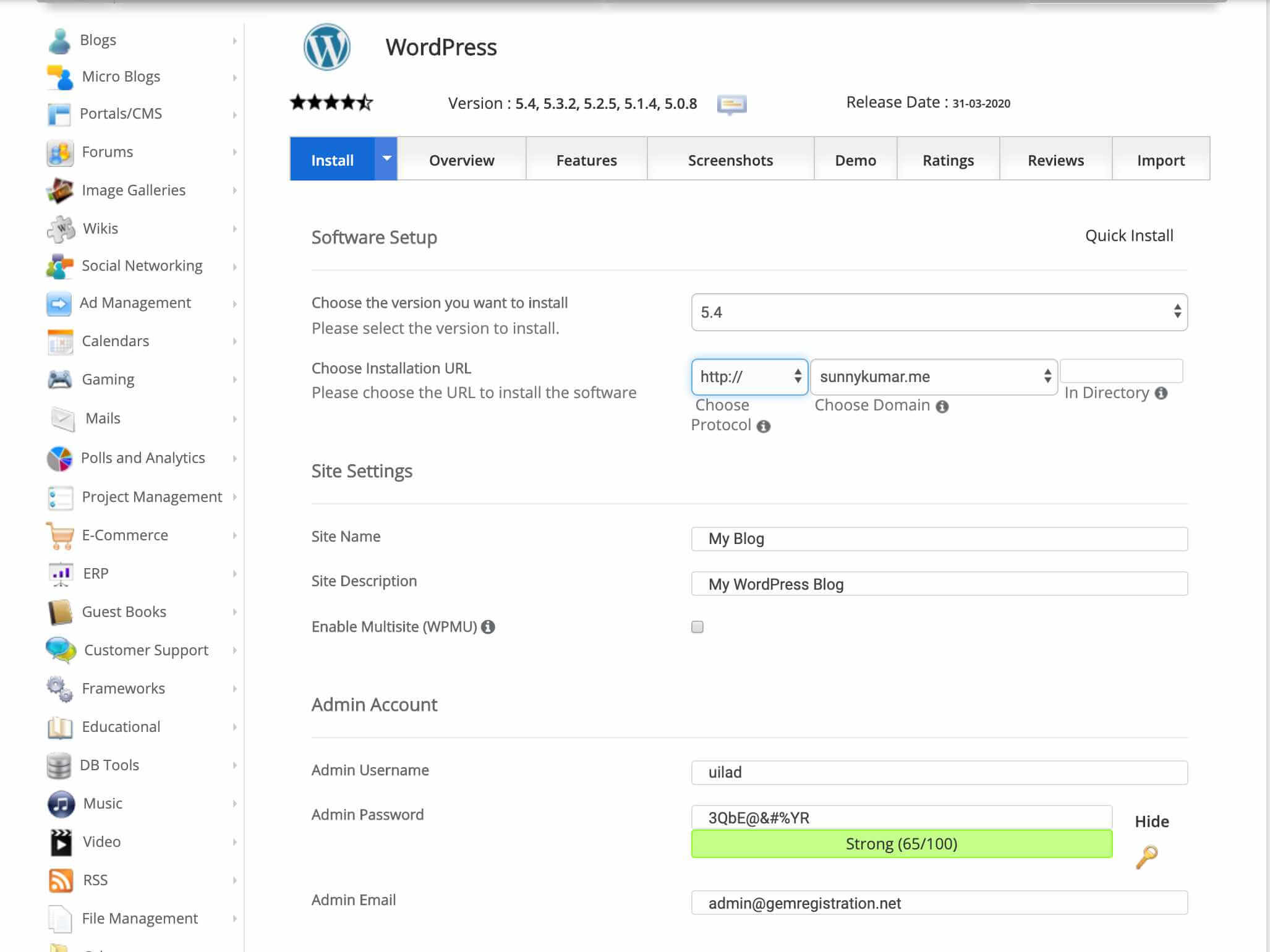
Once you are set up with WordPress, you can now login to your WordPress with your credentials and access the next important step of launching your blog.
3. Installing WordPress Themes & Plugins
After installing and setting up WordPress, the next step is to add plugins and themes to improve its features and appearance.
WordPress is an open-source platform, offering a wide range of free themes and plugins that are commonly used by beginners.
However, despite the availability of numerous free options, you might question the need for a premium WordPress theme.
There are several reasons to consider a premium theme instead of a free one. Here are some of them:
Quality Of WordPress Theme
The first thing that matters is the quality of the WordPress theme. You should always choose a high-quality and premium theme because these themes adhere to the latest coding structure and SEO strategy, which most free themes fail to do.
If you’re using a free theme for your website, there is a high chance that it is poorly coded, making it easily exploitable and detrimental to your SEO performance. I suggest grabbing a responsive WordPress theme for your website.
24×7 Live Support
One crucial benefit of using a premium theme on your website is its round-the-clock support. When you purchase a premium theme, you receive six months to one year of support from the developer.
If your website experiences any problems, you can easily reach out to them, and they will resolve it for you. However, if you are using a free theme, there is a lower likelihood that they will address your issues.
With a free theme, you have to submit a support ticket and wait for an extended period, potentially months, to receive their response (depending entirely on them).
Updates
Lastly, let’s discuss theme updates.
Purchasing a premium theme ensures that you receive automatic security and feature updates from the developer. These updates are crucial as they address security and compatibility issues on your website, resulting in an improved user experience.
Therefore, it is advisable to opt for premium themes and plugins rather than free ones. You can conveniently purchase premium themes and plugins from marketplaces such as CodeCanyon, ThemeForest, MyThemeShop, StudioPress, etc.
Here are the recommended plugins:
- WP Rocket: This cache plugin significantly improves website speed and overall performance on WordPress.
- WP Review Pro by MyThemeShop: An underrated plugin that provides a complete package for implementing Schema on your website.
- RankMath: A highly recommended free plugin for complete website SEO optimization.
- Easy Table of Content: A powerful plugin for creating SEO-friendly tables of content that also displays a site-link in SERP.
Here’s my recommended list of themes and plugins for your website. Additionally, you can enhance usability and features by adding plugins such as WP-Optimize, TablePress, Shortcode Ultimate, and Classic Editor.
4. Creating a Professional Email ID
Once you have installed WordPress on your domain name and successfully installed the theme and plugins, it is now time to create a professional and branded email address.
A professional email address is a unique email ID created using your business domain name instead of the typical @gmail.com or @Outlook.com.
For example, if you visit my website, you will see a branded email address for my business: [email protected], instead of [email protected]. Another email address is [email protected].
Why do we create these types of email addresses instead of using gmail.com or yahoo.com? The answer is simple: if we want a branded email address and search for [email protected], we will find that the email address is already taken by someone else.
There are very few or no chances that the domain name you are looking for is available on Gmail and other mail clients. Furthermore, creating an email address like [email protected] may seem inappropriate to our users.
Instead of using such generic emails, we create a brandable email address with our own domain name, which is unique and professional. This looks more appropriate to our readers and provides more usability, functionality, and simplicity for both users and webmasters. This is why we prefer a professional email address for our website. You can learn more about creating a professional email here.
So how do you choose a brandable email address, and what are the benefits? If you are unsure about what name you should pick, here is my recommendation for choosing a professional email address for your website.
Brandable
The initial factor is brandability. Your email address should have a brandable and memorable appearance. If your email address includes your business or company name, it will appear more professional to your customers.
This will greatly impact your brand and increase customer trust.
For instance, if I am selling something to you and using a brandable domain name, it instills trust. However, if I use a free email client, you may question my services and it does not convey professionalism.
People prefer the most to communicate with the officials in the professional email address, then the personal one.
Whenever you share your email ID with someone, keep in mind that you are essentially promoting your brand or company.
Professional
As previously mentioned, your email address should be unique and appealing.
For instance, if you are sending promotional emails to your customers, an email address like [email protected] would appear more trustworthy than [email protected].
Having a professional email address will impact how your clients or customers perceive your business. Here are some examples of professional email IDs:
- [email protected]: This email address is perfect for your personal use and branding.
- [email protected]: This type of email ID is perfect for business communication.
- [email protected]: This type of email ID is perfect for providing support to your customers.
- [email protected]: You can use this type of email ID for informational emails.
Creating a professional email address is easy. You can do it from your hosting control panel. If you got your hosting from SiteGround, they also provide an option to create a professional and branded email address.
5. Creating a Personal Blog with Your Domain Name
After creating your professional email ID, the next step is to create a personal blog or online store. If you want to use your domain name for a personal blog, follow these steps:
If you’re still wondering what to do after buying a domain name, this idea will help you create a personal blog using it.
There is plenty of space available online and many people enjoy reading blogs. Creating a personal blog is a great way to share your thoughts and build an online community.
Once you’ve decided to create a personal blog with your domain name, make sure to follow these points for success:
- Add Personal Information: After creating a personal blog, it’s important to provide a brief introduction about yourself and your blog. This will help you connect with other bloggers and the online community.
- Add Social Media Links: Social media is crucial in today’s world. By including your social media links in your blog, people can easily connect with you, and you won’t miss out on valuable opportunities.
- Create an Engaging Blog: Creating an engaging blog is essential when starting online. Google favors dedicated blogs with engaging content, making it easier for people to discover your blog.
- Share Your Blog with the Social Media Community: If you want to promote your recently started blog, social media is one of the best ways to get traffic in the beginning. Make sure to share your blog with the social media community.
If you want to start your personal blog and don’t want search engines to crawl your website, you will have the option to do so in the WordPress admin panel.

Once you enable the private option on your WordPress blog, the content will no longer be crawled by search engines, and it will not show up in the SERPs. To enable the private option on your blog, go to Settings >> Reading >> Click on “Discourage search engines from indexing this site.”
When you enable this setting, your blog will not be crawled by search engines, including Google, Yahoo, Bing, etc.
Congratulations! You have successfully launched your first blog with your domain name.
But don’t stop here. We are sharing a few more points on “I bought a domain name, now what?” to ensure that you know all the ways to utilize your domain name. I will even share how you can earn using your domain name, so make sure to read until the end.
6. Creating an Online Store with Your Domain Name
If you’re wondering what to do after buying a domain name and don’t want to use it for a personal blog, consider creating an online eCommerce store instead.
Creating an eCommerce website with WordPress is simple. Install the WooCommerce plugin and activate it to automatically transform your website into an eCommerce platform.
Once your website has eCommerce functionality, users can easily make online purchases without any difficulties.
There are many reasons to create an eCommerce website, and it can be a profitable endeavor.
Here are a few reasons to create an eCommerce website:
- Easy & convenient for Your Business
- Increase Your Website Trust
- Sell Your Product Globally
1. Easy & Convenient for Your Business
If you’ve purchased a domain name but are unsure why you should create an eCommerce website with it, let me inform you that it’s both easy and beneficial for your business.
For instance, if you have a heater business and want to expand your reach by promoting it online, creating an eCommerce website is a simple and convenient solution. Through your website, you can connect with millions of potential customers.
Not only does this allow your customers to save time by ordering your products online, but it also provides them with a hassle-free and convenient shopping experience.
2. Increase Your Website Trust
Another important point as to why you should create your own online eCommerce store is that it enhances the trustworthiness of your website. By establishing an online store after purchasing your domain name, you are able to cater to a larger client base, thereby increasing confidence in customers when it comes to purchasing products or services from your website.
3. Sell Your Product Globally
If your business has a physical store in a certain country and location, it can only reach potential customers in that specific area. However, by creating an online eCommerce store, your business has the potential to reach customers worldwide.
This allows for easy expansion of your business, as there are no geographical boundaries or restrictions. Once you have purchased a domain name, one of the best steps you can take is to start your eCommerce store online and sell your products to a global audience.
7. Curating Content on Your Website/Blog
The last but not least point after you have bought a domain name is to curate content for your website/blog. As you know, a website is nothing without content, and in other words, “Content is King.”
So once we have decided whether you need to create a personal blog or an online store, you need to start creating quality content for your website. First, begin by creating informational content related to your business with proper on-page SEO and by focusing on various LSI keywords in your articles.
What type of content should I write on my blog? And will it rank on SERP? Here are a few tips you need to follow when starting your first blog or online e-commerce store. Follow these points carefully to start ranking on SERPs and gain potential customers or audiences.
- Informational Content: When curating content for your website, focus on creating informative content related to your business or niche. This will help you attract a targeted audience.
- Proper On-Page SEO: Following proper on-page SEO is essential for ranking your website on Google. Google prioritizes websites that adhere to on-page SEO guidelines.
- Focus on Right Keyword: Choosing the right keyword is crucial for your website. Once you have selected a suitable keyword, create posts using it to improve your ranking.
- Focus on LSI Keywords: LSI keywords are important for choosing the right keyword. Including a few LSI keywords in your content can help you attract targeted traffic and improve your ranking.
You can use this method to create great articles for your blog or online store. The article ends here, but in this guide, I will also share a few ways to make thousands of dollars with your blog.
Bonus Tips – Making Money Using Your Domain Name
Here I will share a few methods to easily earn thousands of dollars with your blog. I personally make around $5,000 to $8,000 per month with my blogs, and it’s easier than you might think.
1. Earn with Your Domain Name using Google AdSense
The first way to make money is through Google AdSense.
This is the simplest method to earn money online. Many websites display ads, and you can do the same using Google AdSense. Google AdSense is a well-known program for serving ads on your website.
For example, if you have a website with an average of 10,000 daily visitors and you use Google AdSense, ads targeted to your audience will be shown. When visitors click on these ads, you’ll receive a commission.
If you get a 7% click rate on your website ads, with 10,000 visitors you can expect around 700 clicks on Google Ads. Assuming an average cost per click (CPC) of $0.10, you can easily make $70 per day from these visitors, totaling approximately $2,100 per month.
Therefore, this is the best way to monetize your website and earn money online once you have purchased a domain name.
2. Earn with Your Domain Name Using Affiliate
Another popular way to generate a passive income is through affiliate marketing.
Affiliate marketing is a widely used method that allows millions of people to earn substantial commissions. All you need to do is write informative articles or product reviews on your website and include affiliate links. When your visitors make a purchase through your link, you earn a commission.
In today’s digital age, many people are successfully using Amazon’s affiliate program to earn thousands of dollars each month by reviewing products on their websites. You can start doing the same with your blog.
3. Earn with Your Domain Name using Guest Post
Last but not least, one way to earn money using your blog is by selling guest posts.
Thousands of people create blogs solely for the purpose of selling guest posts, and they are making a significant amount of money from it. I know of one blogger who also sells guest posts from their blog and generates over $1,000 to $2,000 dollars daily. (Yes, you heard it right! They make this much on a daily basis.)
This is a great way to generate passive income using your blog. So I suggest starting your blog once you have purchased your domain name.
Now It’s Your Turn!
I think now you know what you should have to do once you have bought a domain name. This is the best way you can utilize your domain name and turn it into a profitable business.
Now it’s your turn to generate passive income using your blog by following a few simple steps. I hope this article gives you clear-cut information on how to utilize your domain name, and if it does, let me know in the comment section below.
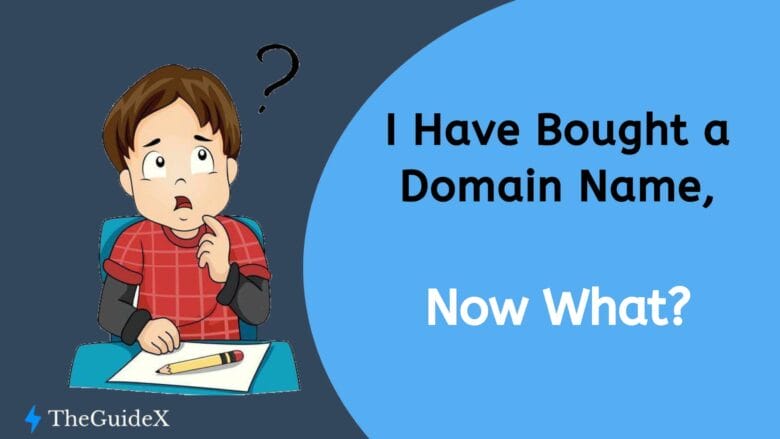
This is a very insightful article.
Thanks for sharing. Keep sharing more.
Thanks & Regards
Aria Mathew
Nice blog I like it keep it up
This is a very insightful article.
Thanks for sharing. Keep sharing more.
Your content is great. Thank you for the great content. Good luck
Thanks for giving so much information. I was bit confused from 2-3 days but now I’m getting full clarity after reading this article.